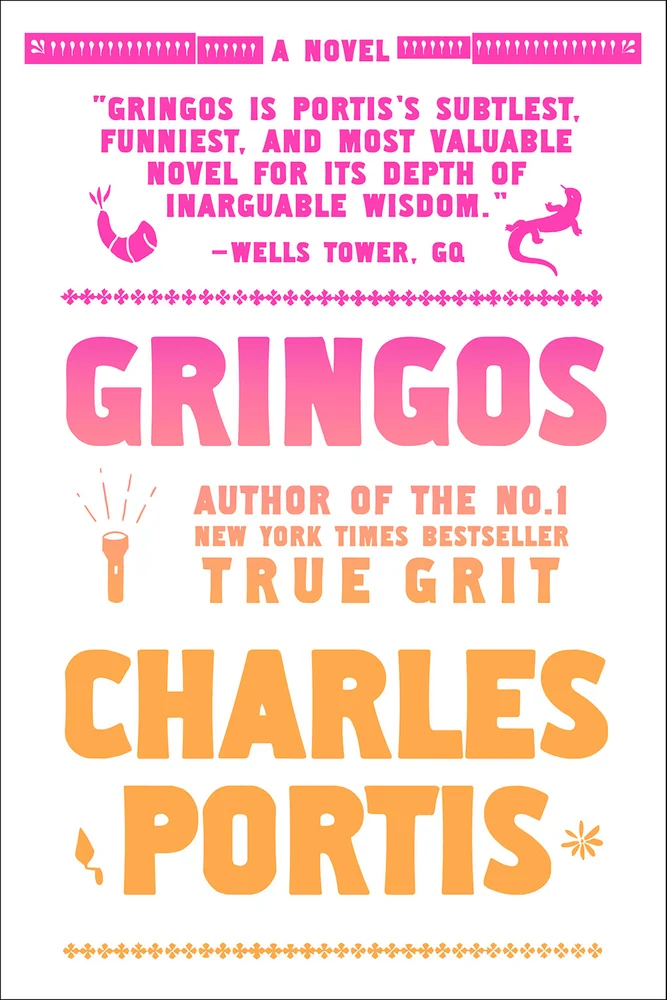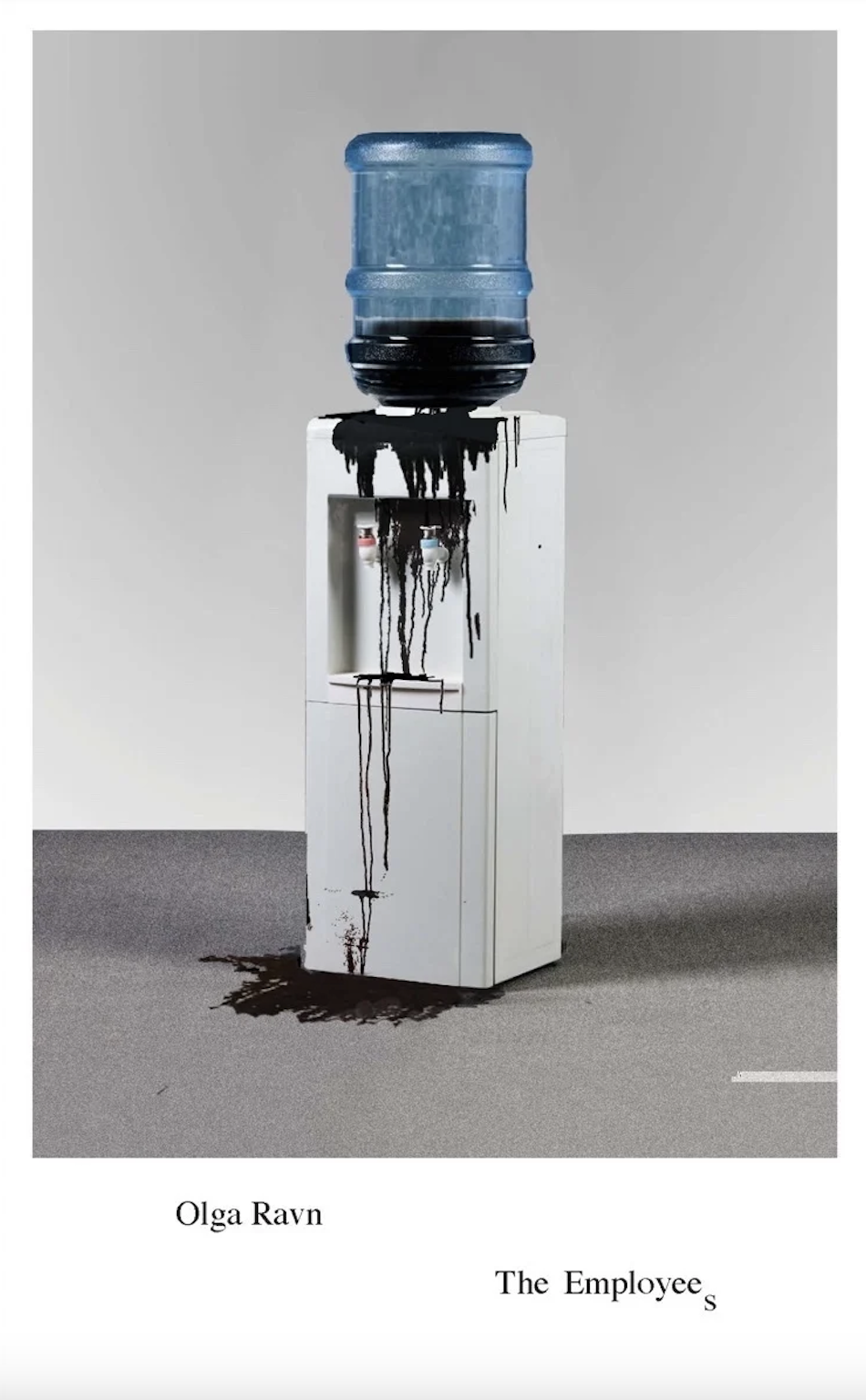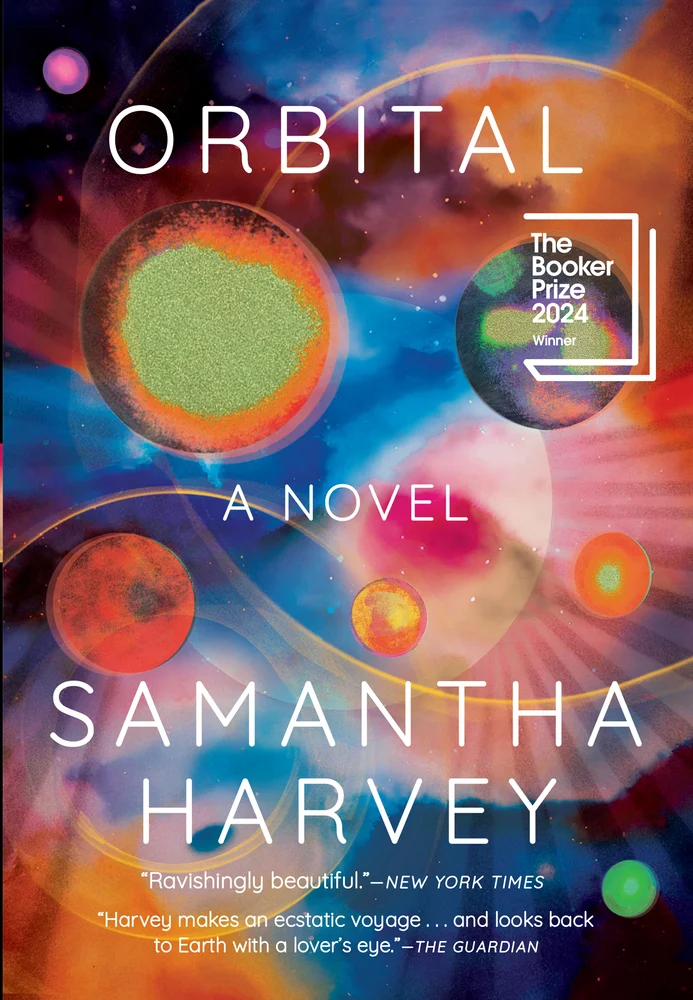Book by DAVID FOSTER WALLACE
Reviewed by

I saw David Foster Wallace read at Franklin and Marshall College in 2006. He was nervous and funny and an excellent reader. But, as with any writer whose writing I’ve loved, it was strange to hear the way Wallace’s reading of his work differed from my reading of his work. I was made aware that my relationship was primarily with his prose, not with him. More specifically, with prose that he’s done with, that’s been sent out into the world to have a life of its own. So, I will admit that I initially didn’t want to read The Pale King. I assumed it was being released only because publishers figured someone would buy it, not because it was a potentially important piece of literature. (And regardless of what I’m about to say in a few paragraphs about changing my mind, it’s worth noting that at the top of the inside front flap of The Pale King, above the summary blurb, is printed, “David Foster Wallace’s last and most ambitious undertaking,” a claim which, at the very least, should make fans of Infinite Jest clear their throats pointedly.)
If you’re a serious reader of literary fiction, it’s hard not to be aware of Wallace’s importance today, even if, like me, you’re unwilling to put him in a box. One of the blurbs on the back of my copy of Brief Interviews with Hideous Men begins, “At just about the time this reviewer was putting on a black suit to attend the funeral of American fiction, David Foster Wallace showed up.” Regardless of how hysterical this reviewer’s conception of American fiction is, it’s hard to deny that at the time of his death, Wallace was an immense presence, a shifter of our collective cultural aesthetic, and a groundbreaking fiction writer and thinker. I’m startled both by the suddenness of his death and by the enormity of the absence it has created.
However, I don’t hope to thoroughly discuss David Foster Wallace’s position in the history of literature, nor do I want to assign his work a specific place in the literary canon, nor will I try to describe how resonant his writing will become. Both my undergraduate and graduate degrees are in creative writing, and though I’ve spent plenty of time studying the historical context and significance of various writers, these tasks don’t necessarily benefit me as an aspiring storyteller. I’m interested in refining my voice, better understanding my personal aesthetic, developing a personal relationship with literature, studying the mechanics of voices I admire, grasping the consequences of the various choices writers make, etc. To understand a young writer’s relationship to literature today, sprint through a very large art museum as fast as you can before being ruthlessly examined by a group of art scholars and art historians. We’re responsible for traditional, mostly dead, mostly white, mostly male, mostly Western European literature; for the (hopefully) more inclusive canons of our college and graduate schools; for keeping up with what’s been recently released, as well as the tiny evolutions in style and theme found in contemporary literature; and for being aware of the releases of small, independent presses. My reading list over the last few months includes: Wuthering Heights, A Visit from the Goon Squad, The Name of the Nearest River, The Horsemen of the Esophagus, Pale Fire, American Masculine, and Mrs. Dalloway. During a reading group discussion of Infinite Jest two summers ago, a fellow University of Massachusetts MFA student told me that he wasn’t interested in discussing Wallace’s work like a literary critic, and that he “really just want[ed] to abide in literature.” What I want to do below is consider the ways Wallace has changed the way I abide in literature both as a writer and a reader. How, as I finish a collection of short stories and work my way through the first draft of a novel, I both struggle with and salute what I’ve learned reading Wallace.
Reading David Foster Wallace makes me feel like a psychic fly on intense uppers in a room full of people mentally going over everything they’ve ever done wrong during their lives. I find his writing terrifying and thrilling and hilarious and often wrenchingly sad. Wallace has been quoted as saying that fiction needs to mimic the way “experience…barrage[s him] with input,” and perhaps this explains why his narrators are so maniacally observant. His sentences are huge and fast, and he jams unrelated sentences up against each other in the same way that cuts are used to create narratives on film. His dialogue often occurs between an unspecified number of speakers, is frequently without dialogue tags, and many of his characters’ actions are revealed not through a narrator, but through the observations of a speaker—these scenes have the disembodied feel of Internet message boards and advertisements. But as barrage-like as Wallace’s writing may be, it doesn’t function in the way that most sources I’ve come to expect input from, whether solicited or not, do. Wallace’s writing has a different effect than most popular media. It commands attention and points out how much there is to pay attention to. My gaze is kept much longer than usual on people and objects and settings. I’m asked to consider in a significant way ideas I normally wouldn’t notice. After I lower one of his books, the world looks like a slightly different place.
As a young writer, I can’t help but read opportunistically; I’ve been told many times that I need to steal from and imitate writing that moves me. But imitating Wallace’s style—characterized by Tim Adams in The Guardian as “wildly discursive…one in which no detail of experience goes unexamined, in which brilliant observation, and comic aside, and satirical nuance and existential theorizing tumble over each other for the reader’s attention all the time”—is a little like trying to learn basketball by watching only NBA Slam Dunk Contests: even if you’re somehow able replicate what you see, it won’t make you a better basketball player. Not that I haven’t tried. I find his sentences’ rhythms intoxicating, and often, when I’ve been reading him, I almost involuntarily attempt to reproduce them in my own writing. Like so many of my peers—especially, it seems, the young, white, and male ones—I catch myself trying to be funny and clever in ways I’m not. I’m intimidated by how ambitious he is; he makes doing anything less than trying to reproduce on the page what it feels like to be alive seem pointless.
All that said, reading him has opened up my fiction. I’ve discovered new ways to become interested in my characters and the events of their lives. This isn’t just about expanded imagination, though it is, in part, about that. It’s about the gash Wallace creates in my perception of a “normal” way of being in the world that is only reparable by making room for a slightly richer perception. So I can’t say exactly when I gave in and got myself a copy of The Pale King, but I know why I did: if Wallace has something to say, I want to hear it, even if it’s only partially said.
And The Pale King is, indeed, partial. Comparing it to a finished novel would be a bit like cutting up construction paper shapes of every country in the world, throwing them in the air, and calling the result a map. Wallace himself, according to the Editor’s Note, said that working on the novel was like “wrestling sheets of balsa wood in a high wind.” I should acknowledge that the presence of plot in Wallace’s fiction has always been, at most, a tentative one (not to be confused with his use of premise, which is more like the importance of pipes to plumbing), but even so, The Pale King in its current state feels like a series of character sketches—at times, really, really detailed sketches, but sketches nonetheless.
A good place to begin considering the form of this novel is the “Embryonic Outline” in the Notes and Asides appendix, which lists the most significant issues Wallace intended the novel to address:
2 Broad Arcs:
1. Paying attention, boredom, ADD, Machines vs. people at performing mindless jobs.
2. Being individual vs. being part of larger things—paying taxes, being “lone gun” in IRS vs. team player.
These ideas are certainly noticeable in the version of The Pale King that we have. They appear in a variety of contexts from a variety of characters. Several IRS men stuck in an elevator discuss the way today’s American citizens “don’t think of [themselves] as citizens in the old sense of being small parts of something larger and infinitely more important to which they have serious responsibilities,” possibly due to a “sense of the individual citizen [being] so tiny and the government and the rest of the country…so big that they’ve got no chance of having any kind of real impact.” A Jesuit accounting professor tells his class that, “Enduring tedium over real time in a confined space is what real courage is,” and that “[in] reality…there is…no one to applaud, to admire. No one to see you…Actual heroism receives no ovation, entertains no one.” One of Wallace’s several first-person IRS-employee speakers claims, “I learned that the world of men as it exists today is a bureaucracy,” and that the only skill that matters in a bureaucracy is “to be, in a word, unborable…It is the key to modern life. If you are immune to boredom, there is literally nothing you cannot accomplish.” In a faux-memoir section in which Wallace suggests that he worked for the IRS, his narrator tells us that one of the “advantages of the dull, the arcane, the mind-numbingly complex,” is that “such qualities help insulate [government agencies] against public protest and political opposition.”
Where the book is most noticeably unfinished is in its structure. According to Wallace’s notes, much of the novel’s plot hasn’t happened yet. The passages that feel “central” feel that way merely because they take up the most pages, not because they feature a primary protagonist. “Irrelevant” Chris Fogle’s soliloquy, for example, takes up one fifth of the book, and yet Fogle, whose nickname Wallace never entirely explains, speaks nowhere else in the text. Much of what we have thus far—with the aforementioned “significant” ideas spliced in where possible—is the introduction and the beginning development of a varied and beautiful cast of characters.
Wallace is at his most Wallacian when he’s developing characters. This is also the aspect of his fiction that probably causes some readers to throw up their hands in exasperation. The debate, I think, is about necessity. Is it enough to tell us, “From Midway Claude Sylvanshine then flew on something called Consolidated Thrust Regional lines down to Peoria whose pilot had pimples at the back of his neck”? Tone and mood are set, we’ve learned something about the character based on the type of observation he’s noticed, and we’ve even learned something about the voice. So, what is gained from going on to tell us about “the beverage service [consisting] of a staggering girl underhanding you nuts while you [chug] a Pepsi,” and the “older lady with a sacklike chin who could not seem despite strenuous efforts to open her nuts,” and describing the emergency laminated card’s figures “crossing their arms funereally with their seat cushions on their chests”? On some level, isn’t this—along with all the big words and technical language—just showing off? Is it all a rampant and shameless exercise in style?
Most critical objections to Wallace’s writing echo Jonathan Swift’s eighteenth century essay on style:
“[T]he faults are, nine in ten, owing to affectation, and not to the want of understanding. When a man’s thoughts are clear, the properest words will generally offer themselves first…Where men err against this method, it is usually on purpose, and to show their learning, their oratory…or their knowledge of the world…[S]implicity, without which no human performance can arrive to any great perfection, is nowhere more eminently useful than in this.”
Certainly I’ve heard more than once—both cynically and as if it were a badge of honor—that his pieces would “never survive workshop.”[2] There’s an ever-present over-the-topness in Wallace’s work that seems indulgent. Often, there’s little concern with actual story telling; one might suggest, for example, that despite the thematic resonance, it’s unfair to subject readers to nine pages that do nothing more than list a minor character’s attempts to kiss every inch of his body, as Wallace does in The Pale King.
When I think about these potential objections, a question I have is: should we be forced to experience what we don’t want to experience, or is it better that we spend our whole lives unaccosted? Perhaps some combination of both. Wallace asks a lot of us as readers. And there are certainly other writers we’d like to read. But ultimately, it’s not about him. It’s about his characters. Or, it’s about the depth and ferocity of individual experience. There’s a profound consideration—and thus, respect—for each character’s mode of being. There’s David Cusk, who experiences “attacks of shattering public sweats” that “begin to inform almost every moment of his day,” attacks that begin with the idea “what if [he] all of a sudden start[s] sweating,” and are exacerbated by the “secondary thought that it must look even creepier to be sweating when it wasn’t even hot in here…as he sat very still with his head down…torn between the desire to wipe the sweat from his face before it actually began to drip…and the fear that any kind of wiping movement would draw people’s attention.” There’s “Irrelevant” Chris Fogle’s hugely-detailed soliloquy describing his transition from “wastoid” drug-user and multiple-college dropout to IRS employee. There’s Leonard Stecyk, some of whose childhood exploits include attending origami camp twice, suggesting to a teacher the “charted reorganization of the coat hooks and boot boxes lining one wall” of his homeroom, as well as “[doing] UNICEF and Easter Seals and start[ing] a recycling program in three straight grades.”
During the scene in The Pale King in which several IRS employees are stuck in the elevator, one mentions that Alexis de Tocqueville, in his book about American democracy, “says…that one thing about democracies and their individualism is that they by their very nature corrode the citizen’s sense of true community. [Democracies make] citizens so individualistic and self-absorbed that they end up as solipsists, navel-gazers.” It would be hard to argue that there’s not a general sense of political apathy in this country, but that’s only part of what’s at stake. The issue is also whether we’re willing to acknowledge that people beyond those we know and love and hate—that is, people who do not directly impact our own existence—have significant value. That our personal experiences inherently provide us with limited ability to interpret the world, and that we could be a little more patient, a little less quick to pass judgment. That learning how to listen is at least as important as learning how to articulate one’s opinion.
In his commencement speech at Kenyon College, Wallace said, “The most obvious, ubiquitous, important realities are often the ones that are the hardest to see and talk about,” and that talking about them was not a virtue, but “a matter of my choosing to do the work of somehow altering or getting free of my natural, hard-wired default-setting, which is to be deeply and literally self-centered, and to see and interpret everything through this lens of self.” This is what I believe Wallace’s fiction offers us: the chance to become slightly more aware of the fullness of the inner lives of the people around us. While the majority of Wallace’s readers can’t say they’ve lost someone important to them—that’s to mistake him for the cult of personality attached to him—we can say we lost a writer who showed us how to be slightly more humane. And that, I imagine, we will miss dearly.
[1] As it’s sometimes unclear what the point of a degree in creative writing is—even, sometimes, to the literature scholar whose office is next door to the poet—I feel moved to say here that creative writing encourages students to develop their critical thinking abilities, and it pushes them to see the world in new, more nuanced ways. This seems to me to be very much in line with the general mission of liberal arts institutions, and it’s odd that so many of us are still under the impression that creative writing classes are essentially glorified arts and crafts classes. It is irrelevant to ask if creative writing programs “produce” (better) writers—that’s like measuring a math major by her skill with a graphing calculator.
[2] Perhaps the misconception that drives this saying is that workshop is a place for writers to find ten (or more) editors, or ten (or more) sources of affirmation for their work, and therefore that writing that is difficult to access is both hard to edit or affirm. Let’s acknowledge, though, that it’s pretty hard to get ten (or more) people to agree on anything, let alone to have identical personal reactions to a piece of art, and that the point of workshop is actually to challenge writers’ conceptions of their own writing. Furthermore, the idea of the “soulless traditional workshop story” seems to come mostly from people who are looking for editors or affirmation and instead are confronted with varied, rigid, differing aesthetics that neither “fixes” their stories nor assures them that they are, in fact, geniuses, which leaves them resenting how confusing the entire process was.



